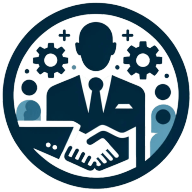7 Ways to Make HR Development Programs Accessible for Diverse Learning Styles
In the rapidly evolving world of HR, ensuring that development programs cater to diverse learning styles and needs is more critical than ever. This article uncovers the most effective strategies, starting with offering multiple learning formats and concluding with the importance of incorporating personalized learning paths. With seven insightful strategies in total, readers will gain a comprehensive understanding of how to make HR development programs inclusive and accessible.
- Offer Multiple Learning Formats
- Provide Diverse Learning Options
- Integrate Microlearning Modules
- Ensure Multilingual Support
- Implement Flexible Scheduling
- Use Varied Learning Modalities
- Incorporate Personalized Learning Paths
Offer Multiple Learning Formats
Accessibility and inclusivity are the key designs of HR development programs. Here at Alpas, I aim to have multiple formats in our programs to cater to all the varieties of learning: video, written, interactive workshops, and individual sessions, so that employees can select what fits them the most. We incorporate methods of digital learning that give users the freedom of pace, which is beneficial for employees who may need more time to understand dense topics.
A case in point is the mental health training we've pursued recently. Aware that mental health is a somewhat sensitive issue, we made sure to include group sessions, private coaching, as well as self-study modules. For visual and experiential learners who preferred a more hands-on approach, we included case studies and role-playing exercises.
We also ensure that we carry out feedback after each set of sessions to keep evolving in our way of working, so as to always stay relevant and efficient for every program. Our focus on flexibility and constant revision allows us to maintain an inclusive learning environment where each team member is supported and empowered.

Provide Diverse Learning Options
At our organization, we prioritize accessibility and inclusivity in our HR development programs by offering a variety of learning formats. We provide interactive workshops, self-paced online courses, and one-on-one mentoring to cater to different learning preferences. This approach ensures that all employees can engage with the material in a way that suits them best.
For example, we recently introduced a mentorship program where employees can choose mentors based on their learning styles and career goals. This initiative has led to increased engagement and skill development across diverse teams.

Integrate Microlearning Modules
HR development programs can become more inclusive by integrating microlearning modules. These modules break down complex information into bite-sized pieces, making it easier for employees to absorb and retain knowledge. This approach is particularly beneficial for people who may struggle with traditional, lengthy training sessions.
Such modules can be accessed anytime, allowing learners to go at their own pace. Explore how microlearning can fit into your existing programs to enhance accessibility for everyone.
Ensure Multilingual Support
Offering multilingual support and resources is crucial for global teams. When programs are available in multiple languages, employees from different regions can comprehend the material better. This helps in eliminating language barriers that could hinder learning and development.
Providing materials in diverse languages showcases a commitment to inclusivity. Take steps to translate key resources to ensure everyone has equal access to educational content.
Implement Flexible Scheduling
Flexible scheduling options can significantly aid in making HR development programs more accessible. Employees working in different time zones or with various commitments will appreciate having the flexibility to choose when they participate in trainings. This reduces the stress and conflict between work and personal responsibilities.
Ensuring that training sessions are available at different times can make a huge difference. Start planning to offer sessions at varied times to better suit your workforce's needs.
Use Varied Learning Modalities
Using a variety of learning modalities such as videos, podcasts, and interactive simulations can cater to different learning styles. People absorb information differently, and having various formats allows employees to choose what works best for them. Videos might be more engaging for visual learners, while podcasts can be ideal for auditory learners.
Interactive simulations can offer hands-on experience that enhances understanding. Consider diversifying your training materials to address the preferences of a diverse workforce.
Incorporate Personalized Learning Paths
Incorporating personalized learning paths tailored to individual needs and preferences can profoundly improve the accessibility of HR development programs. This strategy involves assessing the unique strengths and areas for improvement for each employee. Customized learning ensures that everyone receives training that is relevant and effective for their role.
When training is relevant, employees are more likely to engage and develop meaningful skills. Invest in tools that can help create a personalized learning experience for your team.

